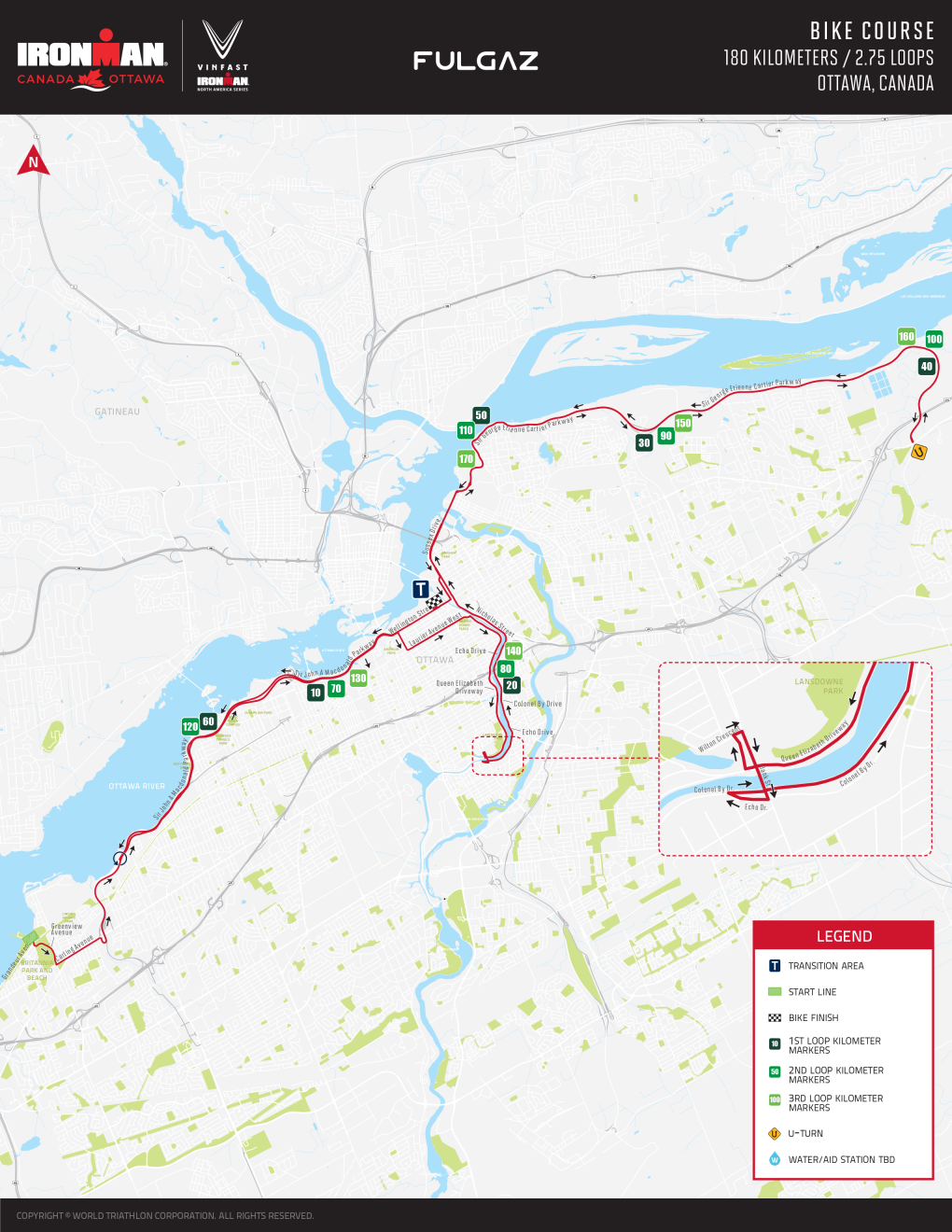News
Tobogganing rules in some Canadian cities draw criticism
|
|
The quintessential winter activity of tobogganing is taking over slopes across the country. But as Canadians slide through the winter months at local hills, the age-old question of safe sledding returns to communities and even council chambers.
In Oshawa, Ont., a city just east of Toronto, councillors spent hours this week debating a proposal to ban tobogganing at all but two city parks.
During the debate, Coun. John Neal finished a comment by saying “parents are not happy.” The city did receive a number of letter submissions denouncing the proposal.
“Children don’t know what to do, they don’t know about amendments and bylaws and numbers. All they know is can I go tobogganing or not and we want to say yes,” said Gail Syme, who attended the meeting in person.
The mother and grandmother frequent the local hills with her family. “It’s amazing for your mental health and not just for the children as well as physical activity but for the adults. They’re laughing again, they’re having fun thinking about their childhood.”
The proposal stems from an insurance review of city-owned hills, where tobogganing is a common activity. The review found issues that should be addressed.
Neal, a councillor of more than 20 years, suggested it was a topic not to be discussed by council.
“I’ve been saying this since the committee meeting, don’t go down this road because if you do then be prepared because there are so many things that can be sanctioned at a park.” Neal suggested the hills be treated like other areas of the city that come with their own risks. “Put signs up ‘use at your own risk’ like we do with our beaches at Lake Ontario.”
Between 2020 and 2021 there were 170 tobogganing-related hospitalizations recorded in Canada, according to the Canadian Institute for Health Information. In comparison, there were 522 injury hospitalizations related to ice skating, and 6,590 from falls on ice. That year, there were 1,446 hospitalizations from playground injuries.
After hours of debate, Oshawa councillors decided it was a hill they didn’t want to go down and the item was shelved.
“It was unfortunate that we even had to have the debate — common sense would tell us that we shouldn’t have these debates in the future, you can’t absolve yourself of 100 per cent of the liability,” said Coun. Tito-Dante Marimpietri, adding that councillors will leave it with city staff to post signage if deemed necessary.
TOBOGGANING HAS ALSO BEEN DEBATED IN OTHER CITIES
Oshawa isn’t the only city to have the debate; cities across the country have weighed in on sledding safety over the years.
Edmonton, Calgary, Winnipeg, Hamilton and Ottawa are among those with designated tobogganing hills that are maintained and monitored by the city. Many municipalities have websites listing the designated hills along with safety recommendations.
Sledding in an undesignated spot could cost you. In Calgary, for example, there is a range of fines starting at $50 for tobogganing in areas not approved for that activity.
Toronto has 27 designated tobogganing hills. At unsanctioned hills, signs prohibiting tobogganing are drawing a lot of criticism in at least one ward.
“I don’t think I’ve had so many irate phone calls as I did about the sign that prohibited tobogganing at Broadlands Park,” said Jon Burnside, councillor for the area. He’s working to change the wording to be more of a warning.
“The last thing we want is Toronto be the city of no fun and when you have signs prohibiting everything right down to tobogganing, that seems like the direction we’re going,” Burnside said.
“It wasn’t about enforcing the no tobogganing, my understanding is it was more about protecting ourselves from litigation. So why not just tell people what the hazards are and let them make their own choices?”
In a statement, the City of Toronto said “the signage is installed to inform residents and direct them to toronto.ca/toboggan for locations where toboggan hills are regularly inspected for hazards.”
Burnside is optimistic that Toronto Parks staff will be able to make changes to the signs to something that reads more like a warning encouraging people to make safe choices.





News
Ironman Canada: Ottawa to host 2025 triathlon – CTV News Ottawa
The city of Ottawa will be hosting the Ironman Canada Triathlon in 2025.
It will be the first full-distance Ironman event to be held in Ottawa. The event is scheduled to take place Aug. 3, 2025.
“We are thrilled to announce this new partnership with Ottawa and bring Ironman Canada-Ottawa, one of our most historic race franchises, to the Canadian capital,” said Ironman VP of North American operations Keats McGonigal in a news release. “Ottawa offers the quintessential Canadian race environment with a plethora of outdoor activities, great weather and a mosaic of culture all nestled at the very seat of government. Ironman Canada has played a prominent role in the history of Ironman and will continue with the expansion to Ottawa. We are enthusiastic and excited to see what futures hold here in Ottawa, Ontario.”
The triathlon will begin at Britannia Beach, with a 3.8-kilometre two-loop swim in the Ottawa River.


From there, the 180-km bike portion will run along NCC and city roads, including the Kichi Zibi Mikan, the Queen Elizabeth Driveway, Laurier Avenue, Nicholas Street, Sussex Drive, and the Sir George-Étienne Cartier Parkway. Roads will be closed to traffic for the event.
Finally, the marathon run will begin at Parliament Hill, run along Wellington Street before looping to head south on Colonel By Drive alongside the Rideau Canal to Hog’s Back and then back up the Queen Elizabeth Driveway to Parliament Hill.
“I am thrilled to welcome the Ironman Canada competition to Ottawa,” said Ottawa Mayor Mark Sutcliffe. “I love this city and so will you. There are so many triathletes in Ottawa. And it’s an absolutely stunning and beautiful place to swim, bike and run. It’s also the perfect location for outdoor adventures and world class events, especially an event as prestigious as Ironman Canada. Ottawa is a great place for this amazing competition. Everyone from athletes to families, friends and fans will have an amazing race experience here. I look forward to seeing everyone here in August 2025.”
General registration opens April 22 on the Ironman website. The Ironman Canada-Ottawa triathlon, part of the VinFast Ironman North America Series, will offer qualifying slots to the 2026 VinFast Ironman World Championship.
“This event showcases the resilience and determination of athletes from far and wide, leaving a legacy of excellence in our city,” said Ottawa Tourism president and CEO Michael Crockatt. “We’re confident about this partnership and believe this will significantly contribute to our local economy, grow our sports tourism market, inspire our community, and further showcase our ability to host world-class events. Ottawa’s scenic landscapes and vibrant communities are ready to welcome participants and spectators alike for an unforgettable experience.”
[embedded content]
Turn by turn directions
Bike course
- Head southeast on Greenview Ave
- Turn left onto Carling Ave
- Take the ramp onto Kichi Zibi Mikan East
- Stay on parkway until it turns into Wellington St
- Turn Right onto Lyon St
- Turn Left onto Laurier Ave W
- Take Ramp onto Queen Elizabeth Driveway and head south
- Turn Right onto Queen Elizabeth Pl towards Wilton Crescent and Bank St
- Turn Right onto Wilton Crescent
- Turn Right onto Bank St
- Turn Right onto Echo Dr
- Turn Right onto Colonel By Dr and head north
- Colonel By Dr ends and becomes Sussex Dr – Continue North on Sussex Dr
- Sussex Dr continues along the Ottawa River and turns into Princess Ave
- Princess Ave becomes Sir-George-Étienne-Cartier Pkwy
- Stay on Sir-George-Étienne-Cartier Pkwy until it ends at Regional Rd 48/St Joseph Blvd where you will U-Turn prior to the intersection.
- Stay on Sir-George-Étienne-Cartier Pkwy west until its Princess Ave, and then Sussex Dr again into Ottawa
- Right onto Wellington St
- Continue on Wellington St until it turns back into Kichi Zibi Mikan West
- Stay on Kichi Zibi Mikan until the yet to be determined exact turn around point approx. near Deschênes Rapids Lookout and begin your second or final loop.
- Repeat these steps above until you return to our transition area for the final time and dismount.
Exact transition area is still being determined and right now it shows on Wellington St. This remains to be determined but it will be in and around this general area within 800 meters.


Run course
- Head west on Wellington St
- Use the Wellington St Underpass to access Commissioner St
- Turn left onto Commissioner St
- Right onto Wellington St
- Right on Colonel By Dr- Stay on Colonel By Dr all the way down to Hogs Back Rd
- Turn around just before Hogs Back Rd and head North
- Turn Right onto the ramp up to Bronson Ave
- Turn Left onto Bronson Ave
- Turn Left onto Lakeview Terrace
- Turn Right onto Queen Elizabeth Driveway
- Queen Elizabeth Driveway turns into Prince of Wales Dr
- Turn around at Prince of Wales Dr and NCC Scenic Driveway (exact turn around will be adjusted here to make the exact distance and may be before or after the roundabout)
- Head North on Prince of Wales Dr
- Prince of Wales Dr turns into Queen Elizabeth Driveway
- Stay on Queen Elizabeth Driveway until Hawthorne Ave
- Turn right onto Hawthorne Ave
- Turn left onto Colonel By Dr
- Turn left onto Wellington St
- Continue on Wellington until turn around to start second loop
- Follow steps above to complete second loop
- Finish line is currently planned on the beautiful and historic Wellington St.
Athletes will notice the bike, run and finish are all planned for Wellington St. Ironman has different versions of the plan still being vetted out and will have updates as it completes those discussions.


News
Former mayor appealing sexual assault conviction dies of cancer – CBC.ca


The former mayor of a township just outside Cornwall, Ont. — who resigned six months after he was charged with sexual assault and child luring in 2021 — died last month.
According to an online obituary, Frank Prevost died of cancer on March 9. He was 56.
In the summer of 2021, Ontario Provincial Police accused Prevost, then 53 and the mayor of South Glengarry, of sexually assaulting a man over several years, as well as three counts of child luring stemming from an undercover police operation.
He was convicted of the sexual assault charge in 2023 and had been in the process of appealing.
The child luring charges were still winding their way through court at the time of his death.
Prevost was also charged in February 2022 with violating a condition of his release order. He had been ordered not to use the internet or similar communication services to access unlawful content, social media, dating sites, chat rooms or forums.
Trials had been scheduled for both outstanding matters, according to court records, but Prevost’s health had been deteriorating.
They “could not proceed because he was unable to attend court or participate in a trial,” his lawyer Mark Ertel said in an email.
All outstanding charges against Prevost were withdrawn at the request of the Crown on April 4.
Prevost’s death was first reported by Cornwall Newswatch.
Notice to abandon appeal
In July 2023, Ontario Court Justice Diane Lahaie found Prevost guilty of sexual assaulting someone between 2018 and 2021 in Stormont, Dundas and Glengarry, according to court records.
In November, Prevost was sentenced to four years in prison, his name was added to the sexual offender registry, and he was ordered to submit his DNA, among other orders.
He and his lawyer launched an appeal that same month. On Nov. 8, the court granted Prevost bail pending a hearing on the matter.
Prevost died before the hearing could take place, the court confirmed.
A notice to abandon the appeal has been submitted and is being processed, a spokesperson for the court wrote in an email Monday.
After the first charges were announced, Prevost took an unpaid six-month leave of absence as mayor of South Glengarry and was removed as warden of the United Counties of Stormont, Dundas and Glengarry.
He announced his resignation after those six months passed.
Lyle Warden was promoted from deputy mayor to interim mayor. Current South Glengarry Mayor Lachlan McDonald was elected in 2022.
News
Canada carbon tax rebate: 2024 deposits start for some
|
|


OTTAWA –
=\
Canadians living in Alberta, Saskatchewan, Manitoba, Ontario, and all four Atlantic provinces will receive the first of four instalments Monday if they filed their 2023 taxes by March 15.
Those who filed their taxes since March 15 will see their first instalment on May 15, while those who file after Monday will wait until June or July.
The payments are based on household size and for a family of four range from $190 in New Brunswick to $450 in Alberta.
Ottawa also has just launched a new online estimator that shows how much you should get from the rebates.
In a bid to make the rebates more understandable Ottawa renamed them the “Canada Carbon Rebate” this year but is still negotiating with the big banks about changing how the deposits are labelled when they show up in your account.
Ottawa has been battling with banks about how the deposits are labelled since they moved to quarterly payments for the rebates in 2022.
Many Canadians were confused, or didn’t realize they even got the rebate, when payments showed up with vague labels including “EFT deposit from Canada”, “EFT Credit Canada.” or sometimes just “federal payment.”
The federal government asked the banks to help label them with the old moniker — the climate action incentive payment — but some didn’t arguing they had a 15 character limit for deposit description.
The deposits will be labelled different depending on where you bank, with some going with the full Canada Carbon Rebate name, others shortening it “CDACarbonRebate” or “Canada CCR/RCC.”
In French, the labels could be “Carbone RemiseCA” or “Dépôt direct/Remise canadienne sur carbone.”
The rebates are sent to offset what people pay in carbon pricing when they buy fuel so they’re not left worse off as a result.
People who do things to lower their fuel use are even better off because they still get the same rebate but pay less in carbon pricing.
The rebate amounts are set annually based on how much carbon price Ottawa expects to collect in each province.
British Columbia, Quebec and Northwest Territories have their own carbon pricing system for consumers so residents there don’t receive the federal payment. Yukon and Nunavut use the federal system but have an agreement to distribute the proceeds themselves.
The parliamentary budget officer says about 80 per cent of Canadians get back more from the rebates than they pay.
He also says though that the economic impact of carbon pricing could lower wages over time, erasing that benefit for some Canadians. The government however argues that climate change itself can cause economic harm if it is left unchecked.





-
Media20 hours ago
Trump Media plunges amid plan to issue more shares. It's lost $7 billion in value since its peak. – CBS News
-
Real eState23 hours ago
Real estate mogul concerned how Americans will deal with squatters: ‘Something really bad is going to happen’ – Fox Business
-



 Tech24 hours ago
Tech24 hours agoJava News Roundup: JobRunr 7.0, Introducing the Commonhaus Foundation, Payara Platform, Devnexus – InfoQ.com
-



 Sports23 hours ago
Sports23 hours agoRafael Nadal confirms he’s ready for Barcelona: ‘I’m going to give my all’ – ATP Tour
-
Science23 hours ago
Total solar eclipse: Continent watches in wonder – Yahoo News Canada
-



 Investment20 hours ago
Investment20 hours agoLatest investment in private health care in P.E.I. raising concerns – CBC.ca
-
Media23 hours ago
Meta's news ban changed how people share political info — for the worse, studies show – CBC.ca
-



 Politics22 hours ago
Politics22 hours agoQuebec employers group urges governments to base immigration on labour needs, not politics – CityNews Montreal



